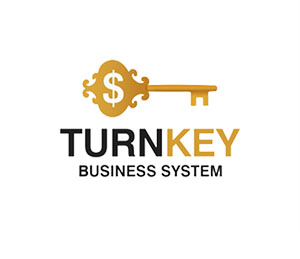Active vs. Passive Investing: What’s the Difference and Which is Right for You?

Active vs. Passive Investing: What’s the Difference and Which is Right for You?
Investing is a powerful tool for building wealth, but not all investors take the same approach. Some prefer the thrill of active investing, constantly seeking opportunities to outperform the market.
Others opt for the steady, hands-off approach of passive investing, aiming to grow their wealth gradually by mirroring market trends. Both strategies have their merits and drawbacks, and understanding the differences between them is crucial for making informed investment decisions.
In this article, we’ll explore the key characteristics of active and passive investing, their pros and cons, and how to determine which approach aligns with your financial goals.
Others opt for the steady, hands-off approach of passive investing, aiming to grow their wealth gradually by mirroring market trends. Both strategies have their merits and drawbacks, and understanding the differences between them is crucial for making informed investment decisions.
In this article, we’ll explore the key characteristics of active and passive investing, their pros and cons, and how to determine which approach aligns with your financial goals.

Active vs. Passive Investing: What’s the Difference and Which is Right for You?
What is Active Investing?
Active investing involves a hands-on approach where investors or fund managers actively buy and sell assets to outperform the market. The goal is to achieve higher returns than the market average by identifying undervalued assets or timing market movements.Key Characteristics of Active Investing:
Frequent Trading: Active investors often buy and sell assets frequently to capitalize on short-term opportunities.
Market Analysis: They rely on technical and fundamental analysis to make informed decisions.
Higher Risk: The pursuit of higher returns often involves taking on greater risk.
Higher Costs: Frequent trading leads to higher transaction fees, taxes, and management costs.
Pros of Active Investing:
Potential for Higher Returns: Skilled active investors can outperform the market, especially during volatile periods.
Flexibility: Active investors can adapt their strategies to changing market conditions.
Opportunity to Beat the Market: By identifying undervalued assets, active investors can achieve above-average returns.
Cons of Active Investing:
Higher Costs: Frequent trading and management fees can eat into profits.
Time-Consuming: Active investing requires constant monitoring and analysis.
Higher Risk: The potential for significant losses is greater due to the speculative nature of active strategies.
What is Passive Investing?
Passive investing, on the other hand, involves a long-term, buy-and-hold strategy. The goal is to match market returns rather than outperform them. Passive investors typically invest in index funds or ETFs that track market indices like the S&P 500.Key Characteristics of Passive Investing:
Low Turnover: Passive investors rarely buy or sell assets, reducing transaction costs.
Market Mirroring: Investments are designed to replicate the performance of a specific index.
Lower Risk: By diversifying across a broad range of assets, passive investing reduces risk.
Lower Costs: Fewer transactions and lower management fees make passive investing more cost-effective.
Pros of Passive Investing:
Lower Costs: Minimal trading and management fees result in higher net returns.
Simplicity: Passive investing requires less time and effort compared to active investing.
Consistent Returns: By mirroring the market, passive investors can achieve steady, long-term growth.
Cons of Passive Investing:
Limited Upside: Passive investors are unlikely to achieve returns significantly higher than the market average.
No Market Outperformance: Passive strategies do not aim to beat the market, only to match it.
Market Downturns: Passive investors are fully exposed to market declines, as they do not actively manage their portfolios.
Active vs. Passive Investing: Key Differences
Aspect Active Investing Passive InvestingGoal Outperform the market Match market returns
Strategy Frequent buying and selling Buy and hold
Risk Level Higher Lower
Costs Higher (fees, taxes, commissions) Lower
Time Commitment High (requires constant monitoring) Low
Potential Returns Higher (if successful) Market average
Who Should Choose Active Investing?
Active investing is best suited for:- Experienced Investors: Those with a deep understanding of the market and analytical skills.
- Risk-Tolerant Individuals: Investors who can handle volatility and potential losses.
- Short-Term Traders: Those looking to capitalize on short-term market movements.
- High Net Worth Individuals: Investors with significant capital to absorb potential losses.
Who Should Choose Passive Investing?
Passive investing is ideal for:- Beginners: Investors who are new to the market and prefer a hands-off approach.
- Risk-Averse Individuals: Those who prioritize capital preservation over high returns.
- Long-Term Investors: Individuals with a long investment horizon who can ride out market fluctuations.
- Busy Professionals: Investors who lack the time to actively manage their portfolios.
Can You Combine Both Strategies?
Yes, many investors adopt a hybrid approach, combining elements of both active and passive investing. For example:Core-Satellite Strategy: The core of the portfolio is invested passively in index funds, while a smaller portion is actively managed to seek higher returns.
Tactical Asset Allocation: The majority of the portfolio is passively managed, but certain assets are actively traded based on market conditions.
This approach allows investors to enjoy the stability of passive investing while still pursuing opportunities for higher returns through active strategies.
Real-World Performance: Active vs. Passive
Studies have shown that the majority of active funds fail to outperform their benchmarks over the long term. For example:
S&P Dow Jones Indices: Over a 10-year period, only about 10% of active funds in the U.S. outperformed the S&P 500.
European Markets: The numbers are even lower, with only 8% of active funds outperforming their benchmarks over a decade.
These statistics highlight the challenges of consistently beating the market through active investing.
Tips for Successful Active Investing
If you choose to pursue active investing, here are some tips to improve your chances of success:- Do Your Research: Thoroughly analyze assets before making investment decisions.
- Diversify: Spread your investments across different sectors and asset classes to reduce risk.
- Set Clear Goals: Define your investment objectives and stick to your strategy.
- Manage Risk: Use stop-loss orders and position sizing to limit potential losses.
- Stay Informed: Keep up with market news and trends to make informed decisions.
Tips for Successful Passive Investing
For those opting for passive investing, here are some best practices:Choose the Right Index Funds: Select funds with low expense ratios and strong track records.
- Diversify: Invest in a mix of asset classes to reduce risk.
- Rebalance Regularly: Adjust your portfolio periodically to maintain your desired asset allocation.
- Stay the Course: Avoid the temptation to make impulsive changes during market fluctuations.
- Think Long-Term: Focus on your long-term goals and avoid reacting to short-term market movements.
The Future of Investing: Trends to Watch
The investment landscape is constantly evolving. Here are some trends that could shape the future of active and passive investing:Rise of Robo-Advisors: Automated platforms that offer low-cost, passive investment solutions.
ESG Investing: Growing interest in environmental, social, and governance (ESG) factors, which can be incorporated into both active and passive strategies.
Hybrid Funds: Funds that combine active and passive strategies to offer the best of both worlds.
Increased Accessibility: Technological advancements are making investing more accessible to a broader audience.
Conclusion: Which Approach is Right for You?
The choice between active and passive investing ultimately depends on your financial goals, risk tolerance, and level of expertise. Active investing offers the potential for higher returns but comes with greater risks and costs. Passive investing, on the other hand, provides a simpler, more cost-effective way to achieve steady, long-term growth.For most investors, a balanced approach that combines the strengths of both strategies may be the best solution.
By understanding the differences and aligning your investment approach with your goals, you can build a portfolio that works for you. Whether you choose to actively trade or passively invest, the key is to stay informed, disciplined, and focused on your long-term objectives.
#Investing #ActiveVsPassive #FinancialGoals









Report
My comments